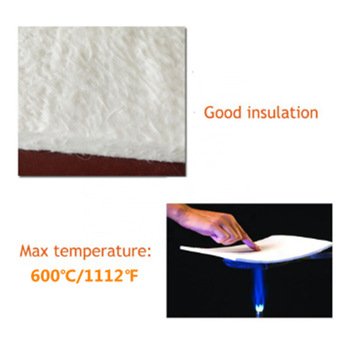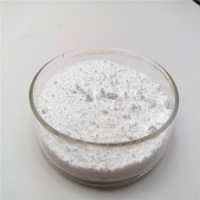Professional solutions on concrete addtives, Concrete Foaming Agent, Superplasticizer, CLC Blocks Additives, and foaming machine
(Plank synthesized polycarboxylates by using acrylic acid)
What Polycarboxylate superplasticizer monomer
Unsaturated monomers of carboxylic acid, alkane macromonomers of long chains, and other synthesized polycarboxylate superplasticizers. It was an excellent cement dispersant which would make great performance in concrete. According to the connection form of its main chains and side chains, PCE could generally be divided into two kinds: polyester and polyether. Structural characteristics of polyester-based PCE were the ester bond of its main and side chains. The key to the synthetic technique was macromonomer, using methoxy polyethylene glycol and acrylate to make esterification or transesterification. However, there were still some difficulties in this process, such as difficulties in polymerization of esterification or transesterification, self-polymerization of small monomers, and many side effects in products. Meanwhile, the reaction of polyether was obtained by radical polymerization, using macromonomers of alkenyl polyglycerol ether (carboxylic acids and sulfonic acids) and other small monomers to polymerize in aqueous solution directly. Active groups can react with the −COOH group on main chains of polycarboxylate, and side chains with the -C=C- double bonds can also be attached to the backbone by radical polymerization. In this way, the structure and properties of polycarboxylate can be changed. Active other small monomers introduced the side chains of molecular structure in PCE. Properties such as molecular weight, polarity, and polymerization activity of these active macromonomers were related to the quality and performance of PCE. Methods for their preparation were shown as follows. Ring-opening polymerization was used by unsaturated monomers like hydroxyalkyl acrylate or allyl alcohol as initiators, which had active hydrogens in terminal chains. Then, by adding oxirane for polymerization, active macromonomers could be obtained. By using methyl methacrylate as an initiator, about 0.05% amount of metal oxide complex as a catalyst, and some efficient polymerization inhibitors, Poellmann et al. combined propylene oxide and ethylene oxide to ring-opening polymerization and synthesized reactive macromonomers containing both of them, whose reaction temperature was 110°C and pressure was 0.3 MPa. In the autoclave, Kinoshita and Tamaki used allyl alcohol as an initiator and sodium hydroxide as a catalyst at 115°C–125°C, which was added into ethylene oxide for polymerization, and thus, a series of macromonomers with different molecular weights was synthesized. By polymerizing what he obtained with maleic anhydride, a series of PCE was obtained. In addition, there was a new synthetic method to obtain macromonomers called embedded ring-opening polymerization. By using methyl methacrylate as an initiator and high-temperature melting of Mg-Al hydrotalcite as a catalyst, a continuous ring-opening reaction mixed with oxirane could be made, which could be embedded into an ester bond in methyl methacrylate.
Plank synthesized polycarboxylates by using acrylic acid
Nowadays, many efforts have been made to improve the structure and the synthesis of PCEs. In another study by Liu et al., amide-structural polycarboxylate superplasticizers (amide-PCEs) were produced by amidation reaction between polyacrylic acid (PAA) and amino-terminated methoxy polyethylene glycol (amino-PEG) at 130–150°C. Yu et al. Used butenyl alkylene polyoxyethylene-polyoxypropylene ether (BAPP) as macromonomers and 2, 2-azoisobutyronitrile as an initiator in N2 atmosphere for 48 h at 70°C. They tended to synthesize a polycarboxylate that could greatly accelerate the hydration of cement. In Lange’s study, acrylic acid and ω-methoxy poly (ethylene glycol) methacrylate ester were used to synthesize nonadsorbing polycarboxylates at 80°C within four hours. It was found that all the synthesized polycarboxylates, which did not adsorb on cement, could enhance dispersion and flowability significantly. Researchers developed excellent PCE with higher water reduction, good adaptability, and other good performances. At the same time, they have been trying to broaden sources of raw materials and synthetic processes, reduce the cost of production, and improve the quality of stability step by step. So, the purpose of this study was to find out their development trends by reviewing the synthesis progress of polycarboxylate, hoping to help the development of this industry.
Polymerizable reactive macromonomers like methoxy polyethylene glycol acrylate
Huang chose different monomers, the ratio of various monomers, and adjusted the reaction process. A series of PCE was synthesized with allyl alcohol polyethylene glycol (APEG, EO = 45), acrylic acid (AA), maleic anhydride (MAL), 2-acrylamide-2-methylpropane sulfonic acid (AMPS), and ammonium persulfate (APS) as well. To determine the optimum process of PCE, various reaction conditions for PCE were intensively investigated, such as reactant concentration, temperature, and the molecular ratios of monomers. Sun and Lei synthesized PCE based on aqueous solution polymerization by methyl acrylic acid (MAA), methoxy polyethylene glycol methacrylate (MPEGMA), and sodium methyl acryl sulfonate (SMAS). There were optimum reaction conditions he considered as follows: the ratio of n(MA): n(AA): n(XPEG) was 2 : 2: 1, the amount of initiator was 1.5%, the reaction temperature was 70°C, and the reaction time was six h. Ran et al. [26] synthesized two different groups of comb-like copolymer dispersants with side chain lengths ranging from 8 to 48 by direct polymerization. Plank et al. synthesized a new kind of methacrylate polycarboxylate with polyoxyethylene side chain hydroxyl groups at its terminal in side chains. This was different from the traditional one with methoxy side chains. It was shown that there was a comb structure in copolymer, which had good adaptability in cement. Also, it had good application prospects. Yamada et al. analyzed the characteristics of PEO’s side chain length and degree of polymerization. It was shown that the effects of chemical structure on the paste fluidity were not significant at high w/c. Zhu et al. synthesized PCE in the water solution by using allyl alcohol polyoxyethylene (APEG), methacrylic acid (MAA), maleic anhydride (MA), and sodium methacrylic sulfonate (MAS) as monomers and the ammonium persulfate as initiator. It was considered that a certain proportion of the anionic polar groups (such as –COOH and −SO3H) were introduced into main chains in PCE. Thus, hydrophilic main chains were generated, which had strong hydrogen bonds in water. They could form a stable three-dimensional hydrophilic protective layer and provide steric hindrance. By adjusting the proportion of each functional group of the polymer’s main chains and side chains, structural balance was achieved in order to improve water reduction.
Price of Polycarboxylate superplasticizer monomer
Polycarboxylate superplasticizer monomer particle size and purity will affect the product's Price, and the purchase volume can also affect the cost of Polycarboxylate superplasticizer monomer. A large amount of large amount will be lower. The Price of Polycarboxylate superplasticizer monomer is on our company's official website.
Polycarboxylate superplasticizer monomer supplier
Luoyang Tongrun Nano Technology Co. Ltd. (TRUNNANO) Luoyang City, Henan Province, China, is a reliable and high-quality global chemical material supplier and manufacturer. It has more than 12 years of experience providing ultra-high quality chemicals and nanotechnology materials, including Polycarboxylate superplasticizer monomer, nitride powder, graphite powder, sulfide powder, and 3D printing powder. If you are looking for high-quality concrete additives, please feel free to contact us and send an inquiry. (sales@cabr-concrete.com). We accept payment via Credit Card, T/T, West Union, and Paypal. TRUNNANO will ship the goods to customers overseas through FedEx, DHL, by air, or by sea.
(Plank synthesized polycarboxylates by using acrylic acid)







